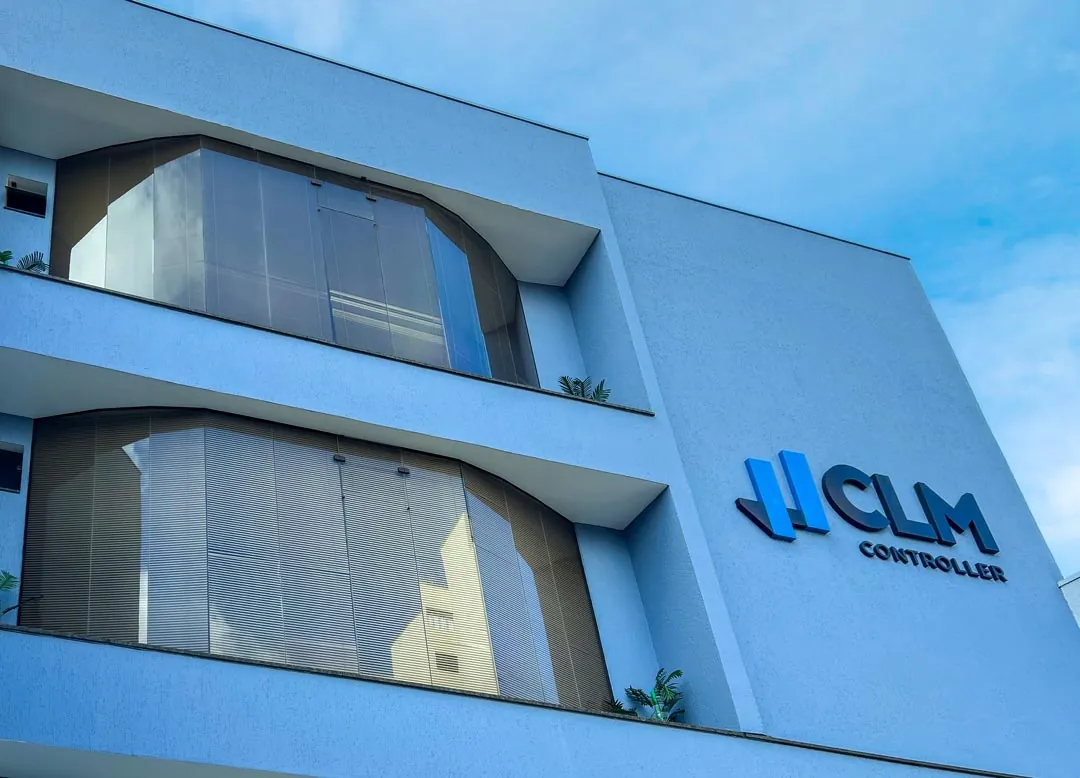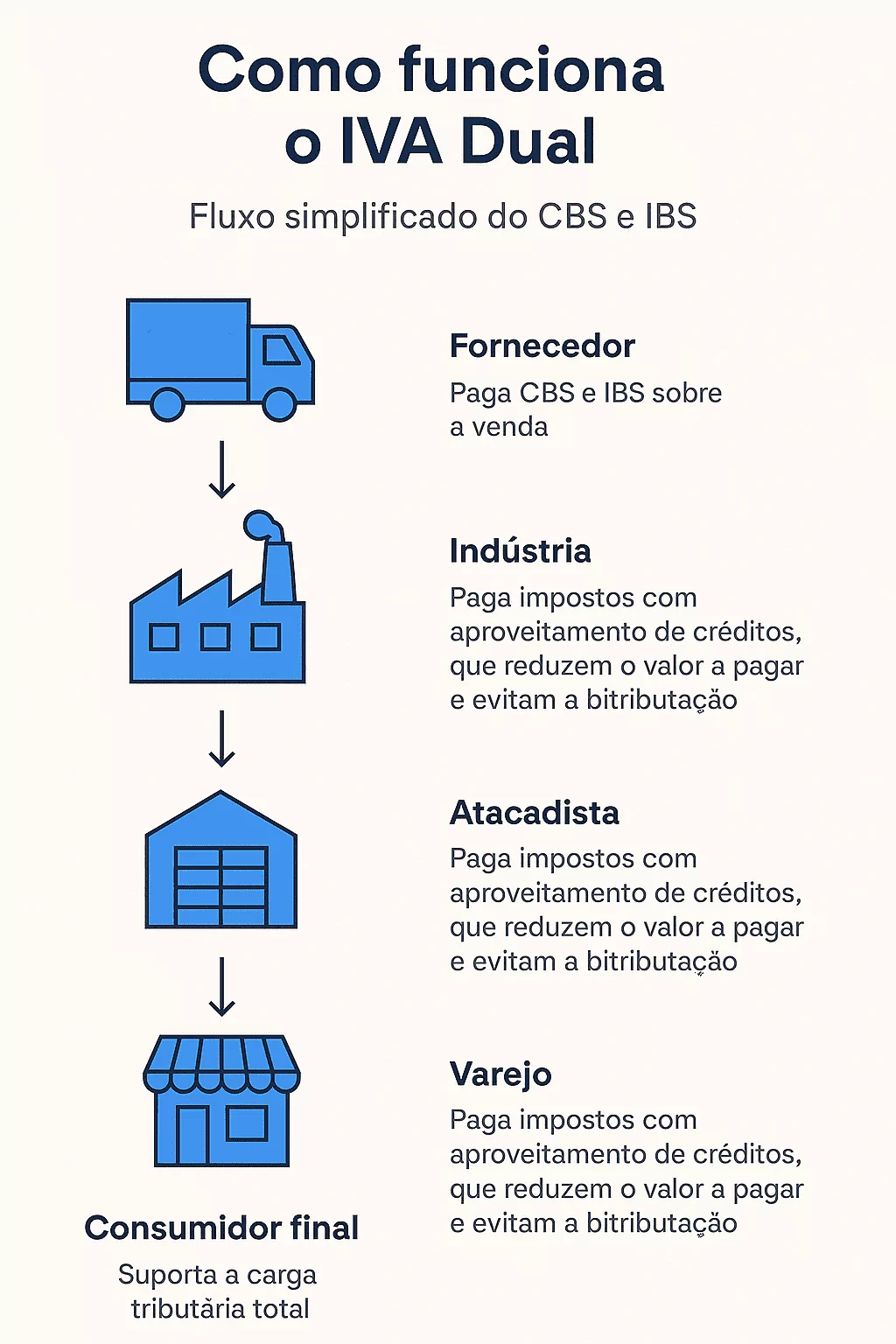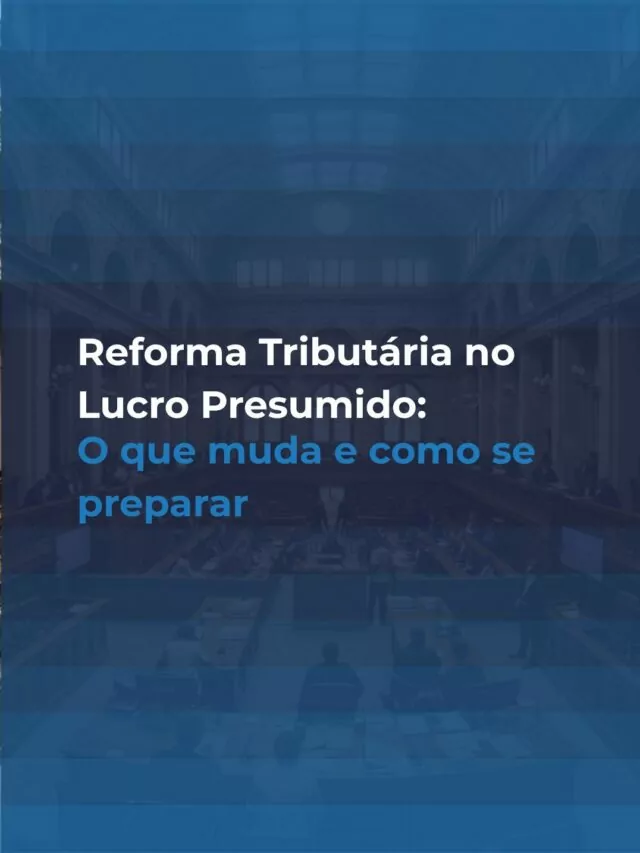O Dual VAT tax reform is one of the most significant changes to the Brazilian tax system in recent years.
In practice, it represents an attempt to simplification and modernization the way taxes are levied on consumption, replacing a series of current taxes with a more efficient, transparent model in line with international best practices.
For companies and taxpayers in general, understanding how Dual VAT will work is essential in order to adapt to the transition and avoid tax risks.
What is Dual VAT?
The term VAT stands for Value Added Tax (or VAT).
It is a model of indirect taxation that is levied on goods and services at each stage of the production chain, but in a way that non-cumulativeIn other words, each company only pays for the value it adds to the product or service. This is the same model already used in several countries.
In the case of Brazil, a model of Dual VATIn other words, it is divided into two major taxes:
- CBS (Contribution on Goods and Services): Federal jurisdiction.
- IBS (Goods and Services Tax): Shared competence between states and municipalities.
Thus, the concept of CBS ibs IVA dualThis is a structure that replaces current federal, state and municipal taxes, creating a more uniform system, but which still preserves the autonomy of the federative entities to collect.
Why did Brazil adopt the Dual VAT model?
Over the last few decades, Brazilian taxation has been marked by complexity, overlapping taxes and a high bureaucratic burden.
Taxes such as PIS, COFINS, IPI, ICMS and ISS generated distortions, fiscal war and calculation difficulties for companies of all sizes.
O IVA Dual Brazil was chosen as the solution because:
- It allows the unification of taxes on consumption without giving up the autonomy of states and municipalities.
- It follows international models that have already demonstrated greater efficiency.
- Reduces litigation, since today a large part of tax cases relate to PIS/COFINS and ICMS.
- It provides greater predictability for companies and investors.
How CBS and IBS work
- CBS - Contribution on Goods and Services
A CBS is a federal tax that replaces PIS, COFINS and part of IPI. Its main feature is its uniform rate and full non-cumulative nature.
In practice, this means that companies will be able to take advantage of credits on all inputs usedreducing cascading charges.
- IBS - Goods and Services Tax
O IBS will replace ICMS (state) and ISS (municipal). It will have a nationally defined rate, but with collection shared between states and municipalities. The idea is to avoid fiscal warfare and ensure fairer and more uniform taxation.
In practice, the two will work in much the same way, both levied on goods and services at all stages, but collected by different levels of government.

eBook
Strategic Planning
Practical example of non-cumulativity
To better understand how the Dual VAT for companiesHere's a simple example:
- An industry buys inputs from suppliers worth R$ 100 thousand25% VAT (CBS + IBS). She pays R$ 25,000 in taxes.
- When selling the finished product for R$ 200 thousandThe tax due is R$ 50 thousand.
- As she had already paid R$ 25,000 in the previous stage, she deduct this credit and pay only the difference, i.e. another R$ 25 thousand.
This mechanism avoids the cumulativeness that exists today, in which many companies end up paying tax on tax, artificially increasing prices.
This point is essential, especially for service and industrial companies, which often suffer from the difficulty of using credits in the current system.
Impacts of Dual VAT for companies
The implementation of Dual VAT in the tax reform will bring a series of impacts for companies, both positive and challenging.
Benefits
- Simplification: Unification of taxes reduces accessory obligations and compliance costs.
- NeutralityEliminates distortions between sectors, preventing certain products or services from being more expensive.
- Legal certaintyReduces room for divergent interpretations and tax disputes.
- TransparencyWith a single tax rate and ample credit, it's easier for companies and consumers to understand the tax burden.
Challenges
- Gradual transitionThere will be a period of coexistence between old and new taxes, increasing complexity in the short term.
- Technological adjustmentsCompanies will need to adapt management and ERP systems to correctly calculate and record CBS and IBS credits and debits.
- Sectoral impactSome sectors that currently have special regimes may suffer an increase in the tax burden.
Comparison: current system vs. Dual VAT
To make it easier for you to understand the changes that will be implemented by the tax authorities, check out the table below:
| Aspect | Current System | Dual VAT |
| Consumption taxes | PIS, COFINS, IPI, ICMS, ISS | CBS and IBS |
| Non-cumulative | Limited, with many restrictions | Broad, with credit for all inputs |
| Rates | Variable and complex | Uniforms |
| Competence | Union, states and municipalities vie for revenue | Union (CBS) and states/municipalities (IBS) in an organized way |
| Disputes | High volume of disputes | Significant reduction expected |

Maximize your benefits with
Holdings
Infographic: how Dual VAT works
To make it easier for you to understand Dual VAT, we've prepared the infographic below. In practice, each link in the chain, i.e. from the raw material supplier to the retailer, use credits from previous stagesThey only pay tax on the value they have added to the product.
This way, although the VAT rate will be higher than the current rates (estimated VAT rate between 25% and 28%), there will be no double taxation, thus generating savings in many cases.
See the infographic below:
Dual VAT and startups/SaaS
O Dual VAT for companies will also have relevant impact in the innovation environment and startupsespecially in the SaaS sector.
Today, many digital businesses face difficulties with tax compliance, especially in relation to ISS.
With the IBS, the trend is towards greater uniformity and fewer discussions about where the tax is levied. This brings predictability to companies that sell services on a national scale.
What companies need to do to prepare
Although there will be a transition period, and the tax reform will only come into force in 2033, it is very important that companies start preparing immediately to avoid surprises and unforeseen events in the future:
It is therefore very important to take the following precautions into account:
- Mapping internal processes: Identify which operations generate credit and how it will be used with CBS/IBS.
- Updating systems: Adapt management software to calculate the new taxes.
- Tax planning: Simulate tax burden scenarios to verify positive or negative impacts.
- Rely on expert advice: Hire a expert advice in the tax, accounting and financial areas for the new reality.
- Keeping up with legislationThe reform will still go through regulations that will define key points such as final rates and specific regimes.
Conclusion
O Dual VAT tax reform marks a turning point in the Brazilian consumption tax system.
With the creation of CBS and IBS, o Dual VAT Brazil promises simplification, greater efficiency and legal certainty, although there are challenges in the transition phase.
For companiesThe change will require technological adaptation, a review of processes and constant monitoring of standards.
More than ever, it will be essential to have specialized support to conduct this process safely and reap the benefits of non-cumulative and tax simplification.
Prepare for Dual VAT - talk to an expert














